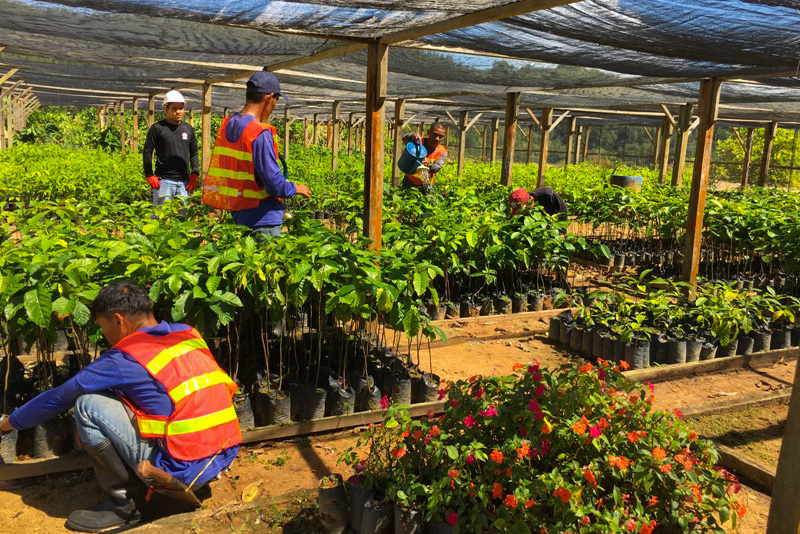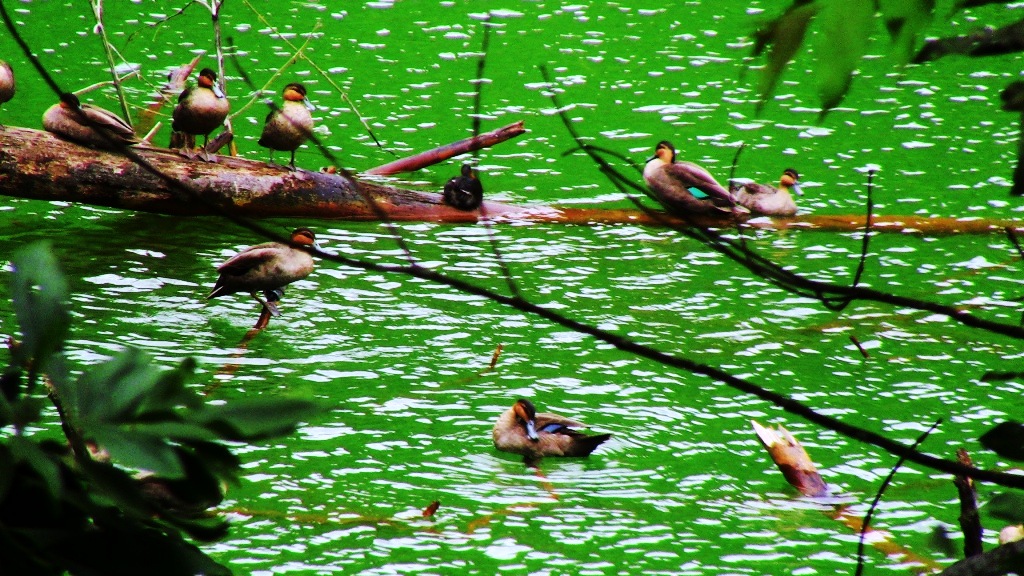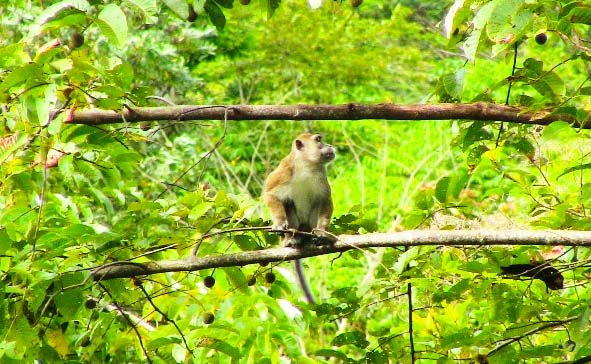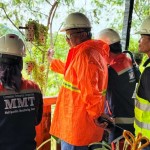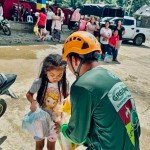-
TVIRD’s Canatuan 'Rehab Team' cultivates the company's nursery, which is their source of planting materials for the 32 rehabilitation areas. The company has planted and grown different species of trees, including varieties that are indigenous to Canatuan.
-
96% accomplishment. A snapshot of TVIRD’s progress is compared in the Southeast overburden photo taken in 2013 (left) and more recently (right).
-
Wild ducks are permanent residents in TVIRD’s Tailings’ Storage Facility (Sulphide Dam). Local officials in host Siocon Municipality believe that this manmade lake could be a tourist destination once the MPSA is turned-over to the government.
-
Monkeys have permanently settled above the forested area of TVIRD’s Sulphide Dam. On some days, these monkeys can also be seen at the wooded area in nearby Sitio Malusok.
LGU Official says Canatuan can be a tourist attraction in the future
SIOCON, Zamboanga del Norte / April 2021 – “We’re happy and satisfied,” Subanon tribal leader Bonifacio Patoh said regarding the final mine rehabilitation project of TVI Resource Development Philippines Inc. (TVIRD) in his homeland at Sitio Canatuan, Barangay Tabayo of this town.
The rehabilitation work, which is almost completed – and which transformed the company’s former mine site in Mt. Canatuan into a lush forest – is described by many as one of the town’s potential tourist attractions in the future.
After being mined for a decade, the area’s ‘rehab’ work is now at 96% completion, according to the Compliance Monitoring and Validation Report of the Multi-Partite Monitoring Team (MMT) – the body tasked by the government to monitor and evaluate the company’s rehabilitation work. The testimony was recently submitted to the Mines and Geosciences Bureau (MGB) in Zamboanga City.
Patoh, former chair of Barangay Tabayo that hosted TVIRD’s prior mining operations, represents the local government unit in the MMT.
He was also among the tribal leaders who signed the Memorandum of Agreement (MOA) that detailed the responsibilities of both TVIRD and the Subanons during both mining operations and the project’s final mine rehabilitation and decommissioning stages.
Source of livelihood
Currently, a total of 437,600 trees have been planted and grown in Canatuan – or an additional 26,600 more trees from last year. Some 6,200 trees were grown in the Gossan Dam, 400 in the Diversion Dam and 20,000 Wildlings all over 32 parcels of rehabilitation area, according to rehab team leader Christopher “Bobie” Tolentino.
This made the upland sitio’s temperature cooler and greener compared to other barangays of Siocon.
Rubber trees, coffee and bamboo are among the crops also planted by the company aside from native hardwood species. The rehab team’s inventory includes 44,000 rubber trees that have grown across 71 hectares and more than 10,000 hills that can now be harvested.
Meanwhile, some 11 hectares have been planted with coffee and a lot are already bearing crops. Aside from these, fruit-bearing coconut trees are also found in areas that are now fully rehabilitated.
“The crops planted and grown in these areas are a potential source of income when TVIRD turns over the area to its rightful owners,” Tolentino added.
Tourist attraction
SB Member Gemma Romina, chair of the Siocon Sangguniang Bayan (SB) committee on tourism, conceived of turning Canatuan into a tourist attraction in the future, owing to the “beauty” of the place.
The local lawmaker who once visited Canatuan along with other local officials and religious leaders also said that amenities can be put in place at the company’s Sulphide Dam, which has been a habitat for wild ducks a year into the company’s rehabilitation.
“Floating restaurants, mountain trails for trekking and zip lines could be placed here,” she said.
“By transforming the area into a tourist destination, the people will have another source of income. The local government will also earn from local tax,” she said.
Model in Rehabilitation
Last year, MGB regional directors from all over the country visited the site and were impressed by the ongoing rehabilitation work. The delegation was led by bureau chief Atty. Wilfredo G. Moncano and DENR Assistant Secretary Nonita S. Caguioa who agreed with the MMT’s assessment of the project.
Members of the Contingency Liability and Rehabilitation Fund Committee (CLRFC) who validated the MGB Region IX update on TVIRD’s progress last year were likewise convinced of the positive development.
The committee, which permitted the company’s Final Mine Rehabilitation and Decommissioning Plan (FMRDP) and oversees its implementation, also approved the ‘work accomplishment rating’ earlier recommended by the MMT.
“Its accomplishment is incomparable to other mining companies which are also doing the same,” said Committee chair Engr. Rodolfo Velasco
Under the Philippine Mining Law (Mining Act of 1995), mining companies are mandated to rehabilitate all mining-affected areas through soil conditioning, tree planting and removal of dangerous substances or chemicals.
To date, TVIRD has invested over Php42 million in its six years of rehabilitation work.
*******

